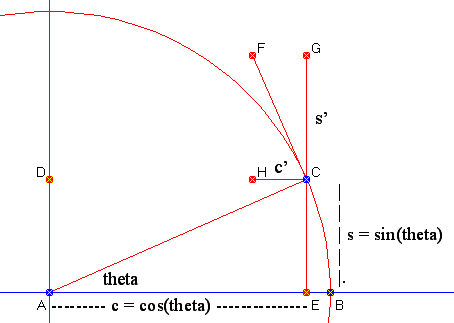With all the stuff in the high school geometry about proving congruence by rigid motions we get this sample geometry question from PARCC

(get the rest from numberwarrior here)
Numberwarrior’s concerns are about the language and the formal properties of congruence and I agree with him on this.
My concerns are about the stated claims of the CCSS to specify the “What do the need to know/understand/be able to do”, and the PARCC test which says “This is HOW you do a proof”.
In this particular example there are other ways of proving the assertion, not least those using the definition of congruence by rigid motions.
Let us do it this way:
1: vertical angles are equal, as there is a rotation of line AD to GC through the angle CBD, and then AD is on top of GC, so angle ABD ABF is also the angle of rotation, and is therefore congruent to angle CBD
2:There is a translation of line HE to line AD, as they are parallel. So the translation of H to H’ puts H’ on the line AD, and so angle H’BF is congruent to angle ABF.
3: But angles are preserved by rigid motions, so angle H’BF is congruent to HFG, and therefore angle ABF and HFG are congruent.
So, if I chose to teach about proof using this approach (my “HOW”) the students won’t even understand the question. Test items MUST be “Method Free”.
Also, the so called Reflexive, Symmetric and Transitive properties of congruence are no different from a=a, if a=b then b=a, and if a=b and b=c then a=c for numbers, and in both situations these are so STUNNINGLY obvious that it is cluttering up the minds of the learners to burden them with this sort of stuff. It is clear to me that this is a contribution to the CCSS from the sole pure mathematician on the committee.







